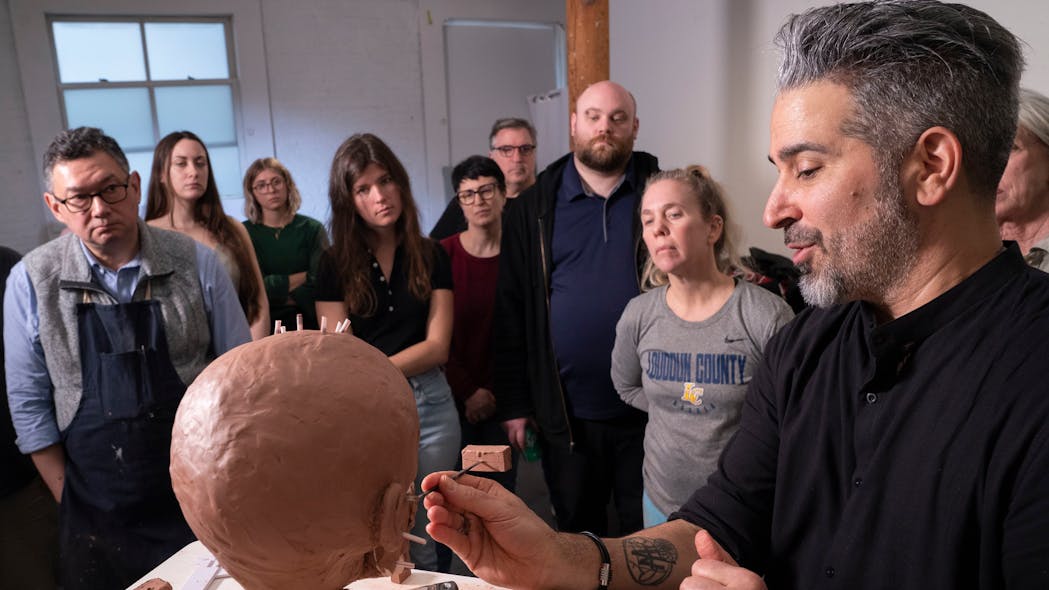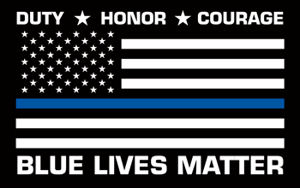Jan. 23, 2023 For nearly a decade, a New York Academy of Art workshop has allowed artists to help solve NYPD cold cases by reconstructing the appearances of victims based on their skulls.
By Rocco Parascandola Source New York Daily News Distributed by Tribune Content Agency, LLC.

She died awfully, found murdered in a grassy area off the Belt Parkway in Brooklyn on May 18, 1991, then buried without a name at Potter’s Field on Hart Island.
Melanie Berardicelli wasn’t even born when the remains were found. But during a recent workshop at the New York Academy of Art in Tribeca, she put a face to the woman known in a national database as case number UP7390.
Berardicelli, 27, an instructor at the academy, created the face from a replicate of the woman’s skull in a last-ditch effort to identify her and help the NYPD figure out who shot her in the face and chest, and why.
She called the task “a great honor” that filled her with hope.
“I’d like to be able to bring closure to a family who’s been through so much grief.” Berardicelli said. “To be able to bring closure, figure out what happened, who she was — that means the world to me.
Berardicelli was among 17 artists in the weeklong workshop on reconstructing the appearances of people based on their skulls.
Six of the artists, including Berardicelli, worked on New York City cold cases. Other artists worked on known people, including a 19th-century Viennese prostitute and a still-alive husband and wife. The husband showing up on the last day and looking very much like the face created by a young academy studentwork, German Tellez.
While New York City cold cases have been the workshop’s mainstay since it started in 2015, over the years its students have taken on reconstruction cases from across the U.S. and Canada.
The students have worked with the skulls of unknown soldiers killed in the Civil War, the remains of an African slave who died in Connecticut during the colonial era, and migrants who died crossing the U.S. border in Pima County, Ariz. In 2020, the students worked on 15 cases presented by the Royal Canadian Mounted Police from British Columbia and Nova Scotia.
To reconstruct a face, a 3-D printer spits out a fake skull based on a CAT scan of the person’s actual skull.
The artists, working with a block of clay, marbles for the eyes, and toothpicks to mark the depth of the skull’s tissue, typically know little about each person beyond race, gender, age range and possibly hair color.
Joe Mullins, a forensic imaging specialist who has led the workshop since its inception — he worked in this year’s session on a San Diego crime victim — said his students might be the last best hope for identifying the long-forgotten.
“These are the coldest of the cold cases,” Mullins said. “The spotlight is turned off on these cases. We want to turn the spotlight back on and tell the stories of these victims.
“I want this work to be the catalyst so somebody sees the image and says, ‘Oh my gosh — I think I know who that is.’”
The reconstructed faces are posted on the website for the National Missing and Unidentified Persons System, or NAMUS.
Berardicelli’s mystery woman, found near Betts Creek in East New York, had previously been described on the NAMUS site as 20 to 40 years old, with brown hair.
But in October 2021, a woman who saw a description of the woman contacted NAMUS and said she believed the unidentified remains were of a long lost friend, said Bradley Adams, who is the director of forensic anthropology for the city Medical Examiner and has partnered with Mullins on the Art Academy workshops.
Unable to determine if the woman’s hunch was correct, the Medical Examiner in August exhumed the body and conducted an anthropological analysis. The dead woman was not the tipster’s friend, it turned out, Adams said.
But more sophisticated tests than had been performed before revised her age to between 17 and 25, and changed her hair color to light brown or blonde. She was white and was wearing what appears to be a wedding band, with a twisted vine design, on her left ring finger.
“We’re hoping we can finally get a name for her,” Adams said.
Another student artist, Alfonso Lleve, 48, had reconstructed three faces before, including that of a migrant who died trying to cross into Arizona and was later successfully identified.
Lleve saw a picture of the migrant taken when he was still alive and realized he had done his job well.
“It was pretty close,” Lleve said. “The nose was off, but everything else was pretty close. You’ll never get an exact match unless by pure chance. The goal is to get something that will spark a recognition.
“It was a good feeling.”
Lleve sculpted a man whose skeleton was found by a passerby on 64th St. in Sunset Park, Brooklyn on Nov. 9, 2001. How he died has never been determined, but he is believed to have been 25 to 35 years old and 5 feet, 8 inches tall. He might have been Japanese, though Lleve wasn’t told that because the ethnicity wasn’t certain.
The finished face does in fact look Japanese.
“As I was doing it, I said to myself, ‘This guy looks a little Japanese,’” Lleve recounted. “At this point, I know how to do facial features more efficiently, but you’re always learning.”
John Volk, the academy’s director of continuing studies, said authorities do not always tell the school when the students’ work brings about tips that lead to a positive identification.
But the first of the school’s forensic sculpting classes in 2015 led to one person being identified, and there have been a few other since then.
The other city cold cases that academy students worked on included the partial skeleton of a white woman, 18 to 25 years old, found March 29, 1993 near the LIRR tracks in Brownsville. Her cause of death is unknown.
The three others were murders.
One was the skeletal remains of an adult Black woman found Feb. 20, 2002 in the refrigerator of a condemned house on Fulton St. in Cypress Hills. A second was a white woman, possibly as young as 16, and wearing a ring with the initials P Mc. G, found Feb. 10, 2003 — perhaps as much as 24 years after she was buried under a large concrete block in the basement of a Times Square apartment building.
The third was a Black man whose dismembered body was found by construction workers behind a false wall in a Harlem building on Aug. 1, 1997.
“How can these people go unidentified, just fall off the face of the earth?” asked Mullins. “So we have to get it right.”

